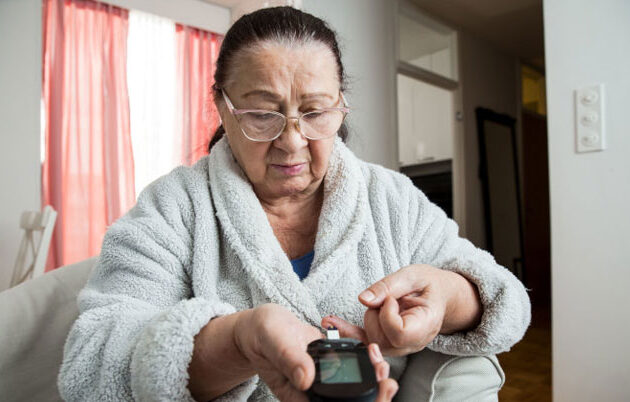The study asked whether expanding criteria for flu testing and enabling faster testing would cause better health outcomes for residents. Nursing staff in facilities that agreed to be part of the experimental arm of the study conducted rapid tests on residents who had at least two minor flu symptoms such as a runny nose, congestion, sore throat, cough or fever. Results of the on-site tests of nasal swab samples were available within 12 hours and often in as little as 15 minutes. Facilities that were part of the control group followed standard infection control guidance. Control sites did not have on-site testing available, and typically sent samples to external labs for testing.
Lowering the threshold for testing and obtaining test results faster led to increased use of the antiviral medication oseltamivir, commonly known by its brand name, Tamiflu, for influenza prevention, the study showed.
The nursing homes that did rapid testing and treating saw emergency room visits by residents decline by 22%, hospitalizations decline by 21% and hospital length-of-stay decline by 36%.
The researchers were encouraged to see that nursing homes that leveraged rapid testing grew so adept at spotting and halting influenza outbreaks that they saw fewer cases of the flu, falling from 22% in the first year to 3% by the last year of the study, according to Dr. Jonathan Temte, lead author of the study and professor of family medicine and community health at the UW School of Medicine and Public Health.
“This study demonstrates the profound effect of early detection of influenza in long-term care facilities,’’ he said. “Nursing homes are collections of very vulnerable individuals, so anything we can do to protect them is very important.”
The small randomized controlled study followed residents of 20 Wisconsin long-term care facilities during three flu seasons from 2016 to 2019, prior to the COVID-19 pandemic. Ten of the nursing homes continued their normal flu protocols, testing patients whose symptoms met the standard definition of influenza and sending the swabs out to a laboratory for analysis, a process that could take three days to yield results.
Ten of the nursing homes used a broader definition of flu symptoms, which could be as minor as a new runny nose and did not require a fever. This was important because research shows that elderly patients often don’t have the high fevers and other symptoms more typically seen in younger people with influenza.
The quicker results helped stamp out flu outbreaks. Time is of the essence for managing influenza because the virus proliferates very quickly, Temte said.
“We think we did a good job of catching people earlier by getting the results in 15 minutes,” Temte said. “That puts us three or four days ahead of the game, which is really important because we can have new generations of influenza cases every two or three days.”
Additionally, nursing home staff at experimental sites did not have to wait for a doctor’s order to perform tests. They were trained and authorized to make decisions about testing not only of residents, but also of any sickened staff and visitors, likely halting further infections. The nursing homes that participated were so happy with the results that nine out of 10 wanted to continue with the rapid testing and treatment after the study ended.
The rapid tests cost about $12 each. Given the fact that the average per-day hospital stay in the U.S. costs $2,883, even a year’s worth of routine influenza testing and treatment can help reduce per-patient health care costs, according to Temte.
The pilot study ended just as the COVID-19 pandemic was ramping up, which delayed data analysis and publication of the flu intervention study. But, the Centers for Disease Control and Prevention infectious diseases section was so interested in the concept that they invited Temte to present on the study, he said.
The study was funded by a grant from the Wisconsin Partnership Program’s Collaborative Health Sciences program and published this month in the Journal of the American Medical Directors Association. In-kind support, including Sofia analyzers and influenza test kits, was provided by Quidel Corporation, San Diego, Calif. Quidel did not contribute to the research design, conduct, analysis or writing of the study.
Other UW School of Medicine and Public Health members of the research team included Mary Checovich and Shari Barlow. The Wisconsin State Laboratory of Hygiene and the Wisconsin Department of Health Services also participated in the study.

